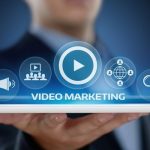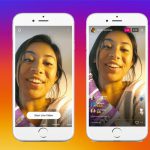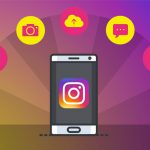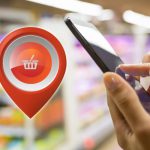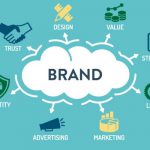Conversion rate…it might sound like some sort of religious metric, but in reality, it’s one of the best ways to measure the performance of your advertising campaigns. Unlike click-through rate or cost-per-click, conversion rate describes how good your marketing is at getting people to do what you want them to do (we call this “converting” in the marketing world). Generally speaking, the higher your conversion rate, the better your marketing is!
What is Conversion Rate ?
To put it simply, your conversion rate is the percentage of visitors to your website or landing page that convert (aka, do what you want them to do). Depending on your business goals, a “conversion” could be almost anything, but here are a few common types of conversions:
- Making a purchase
- Submitting a form (contact us form, lead gen form, etc)
- Calling your business
- Engaging with your online chat
- Signing up for a subscription (either paid or free—like a newsletter)
- Registering on the site
- Downloading something (software trial, eBook, mobile app, etc)
- Using something (new/advanced feature on your software or app, simply using your software/app for a certain amount of time)
- Upgrading their service
- Engaging with your site in some way (time on site, repeat visits, number of pages visited)
There are plenty of other conversion actions people can take on a site, but this should give you a feel for what a “conversion” is. Basically, a conversion is a measurable action that progresses a potential customer towards becoming a paying customer in an important way.
Also Read:
Social Media ROI : A Complete Guide to Measure it For Your Business
What’s a good conversion rate ?
A good conversion rate is above 10%, with some businesses achieving an average of 11.45%. Earning a good conversion rate places your company in the top 10% of global advertisers, which makes your conversion rate two to five times better than the average conversion rate.
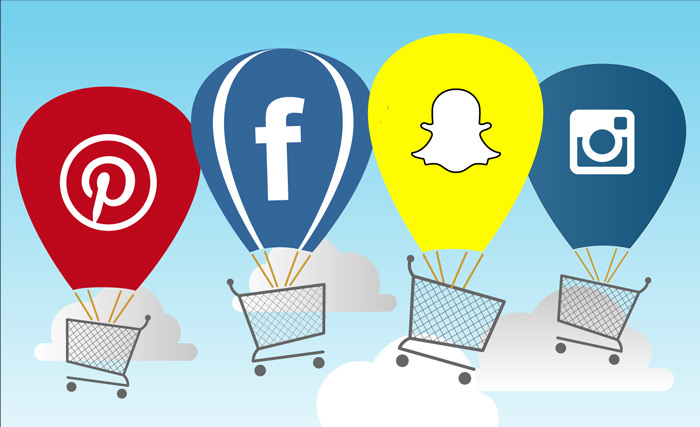
Conversion rate optimization statistics
- Only about 22% of businesses are satisfied with their social media conversion rates.
- Adding videos to landing pages can increase conversions by up to 86%.
- For every $92 that is spent in getting new customers, only a meager $1 is spent in trying to convert them.
- The phrase “conversion rate optimization” is searched more frequently than in previous years.
- 68% of small businesses do not have a documented conversion rate optimization strategy.
- Just by using correct targeting and testing methods, you can boost your conversion rates by up to 300%.
- B2C companies that take advantage of “marketing automation” can boost conversions to as high as 50%.
- The average conversion rates of visitors that see user-generated content (UGC) is 161% higher than those that don’t.
Also Read:
What Are The Newest Social Media Sites to Consider for Your Brand ?
How Do You Calculate it ?
Calculating conversion is actually fairly easy. All you have to do is divide the number of conversions you get in a given time frame by the total number of people who visited your site or landing page and multiply it by 100%.
Conversion rate = (conversions / total visitors) * 100%
For example, if your site had 17,492 visitors and 2,305 conversions last month, your conversion rate is 13.18%. Easy enough, right? In fact, if you set up your tracking right, most online advertising (eg, Google Ads, Facebook Ads) and analytics platforms (eg, Google Analytics) can actually show you your conversion rate right in their interface.
One of the great things about conversion rate is that you can be as specific or as broad with your conversion rate as you want to be. Here are a few different types of conversion rate you can use and ways you can use this data to examine performance:
- Overall conversion rate (how well does your website convert traffic from any source?)
- Marketing channel conversion rate (is Google Ads traffic or Facebook Ads traffic more likely to convert?)
- Page-level conversion rate (which of these pages is better at converting traffic?)
- Campaign conversion rate (did my targeting changes improve anything?)
- Individual ad conversion rate (do I need to change my ad copy? does this ad drive more qualified traffic?)
- Keyword conversion rate (which keywords deserve more budget?)
Why social media is very important for your business ?
Here are some reasons why:
Conversions: It doesn’t matter if you are a B2B or B2C type of business, social media is an effective tool for generating new leads. Every social media post, whether it is images, text or video content is an opportunity for leads to convert and move further down your sales funnel.
Traffic: They are billions of users on social media, and having access to all these individuals can help boost your traffic. This is especially important for new websites that are still trying to build traction. Getting traffic from Google can take some time so you can use social media to boost your traffic in the early stages of marketing.
Customer insights: Have you heard of social listening? Social listening is a way to understand a brand’s popularity by analyzing information from various social media channels. Social media listening allows you to get valuable insights on customer feedback, brand mentions, and the type of content, product or service that your audience engages with the most.
Brand awareness: Social media is a great way to build awareness for your brand. No matter how great your product or content is, you would not receive any leads or generate traffic if no one knows about you. With social media, you have a chance to promote your content to a wider audience and increase brand awareness.
Also Read:
Improve Your SEO Ranking + Step-by-Step Guide
How can you improve your conversion rate ?
We’ve seen some statistics and reasons why social media should be part of your marketing strategy, now let’s look at tips you can use in improving your social media conversion rates.
1. Create a Perfect Landing Page
If you are doing any sort of paid advertising (Google Ads, Bing Ads, etc), you should be sending your traffic to a dedicated landing page. There are so many good reasons to do this, but the biggest reason is page optimization. If you’re going to pay to get traffic to your site, you want to send them to a page that is designed to sell.
Landing pages are also the easiest type of page to do CRO on. So, if you’re still sending your traffic to your homepage, this is the first place I’d start.
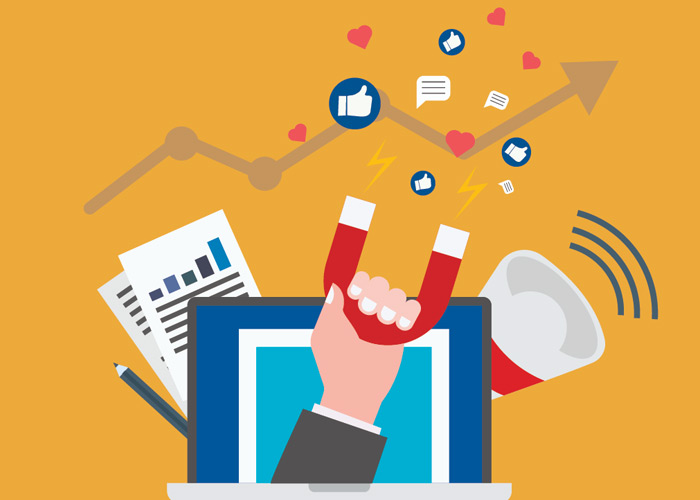
2. Conversion Rate plans
- Setting a calendar reminder
- Blocking out time in your schedule and calendar
- Creating personal or team goals for achieving a higher conversion rate
If you don’t have enough time, consider conversion rate optimization services to boost sales and revenue.
conversion rate optimization
3. Decide on your goals
It is important that you understand the reason why you are starting the campaign.
Will your landing page be created solely for generating traffic? Would it be for capturing leads? Would it be tied to a social media campaign?
These are some of the questions you need to answer before you proceed.
Here are a few areas you can look at first:
- Headline. Your headline needs to sell and sell hard. 80% of your audience won’t get past your headline, so—even if you don’t test anything else—you should at least test your headline.
- Offer. Your audience isn’t you, so they don’t always respond the way you think they will. Try different descriptions and layouts to see what resonates best with your prospective clients.
- Call-to-action. Like your offer, the right call-to-action (CTA) may take a few tests to discover. Try more descriptive CTAs or different button sizes.
- Media. Sometimes a new picture or video can make all the difference.
4. Take advantage of influencer marketing
The power of influencer marketing cannot be understated. Due to the huge amount of followers and engagement influencers receive, they can help your brand get more conversions and improve brand awareness.
Research done by TapInfluence shows that influencer marketing offers 11 times more return on investment than other traditional forms of digital marketing. Further study showed that 95% of consumers would trust recommendations from other social media users over a brand.
The problem is that most people believe that working with influencers can be very expensive. In reality, you don’t need to shell out thousands of dollars before you can work with influencers.
Also Read:
Instagram Influencer Marketing : 6 Perfect Ideas
CR in Social Media
5. Try promotions via video
Product-related videos go hand in hand with a higher social media conversion rate.
Noted to increase conversions and time spent on any given page, there’s a reason why video-centric posts and ads are all the rage among brands.
Therefore, videos do double duty of showing off your products in action and catching the eyes of social customers.
6. Use user-generated content to increase your conversion rate
Serving as social proof and a much-needed sense of authenticity, user generated content is second to none for driving social sales.
Making user-generated content a cornerstone of your marketing strategy is a low-hanging way to boost your social media conversions.
7. Track your social analytics
With reporting and analytics, you can tie specific goals and outcomes to campaigns to understand what’s converting and what’s not.
Conclusion
Conversion rate is one of the most important marketing metrics.
Unlike click-through rate, conversion rate tells you what percentage of your traffic is actually doing what you want them to do. You can buy all of the clicks you want, but if those clicks don’t convert…something is wrong.
Now that you know what conversion rate is, how to use it and how to improve your conversion rates, it’s time to put conversion rate data to work for you!

